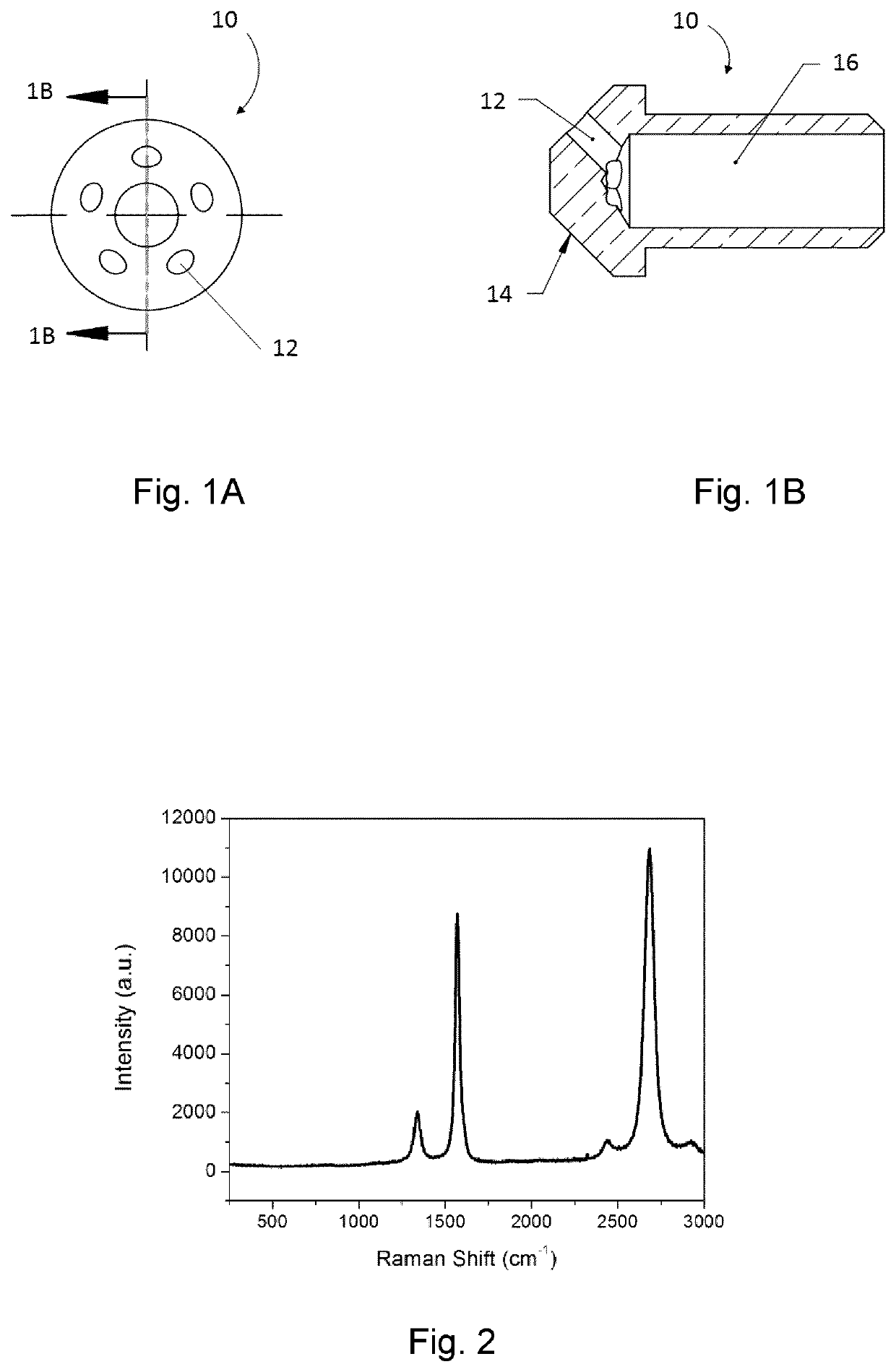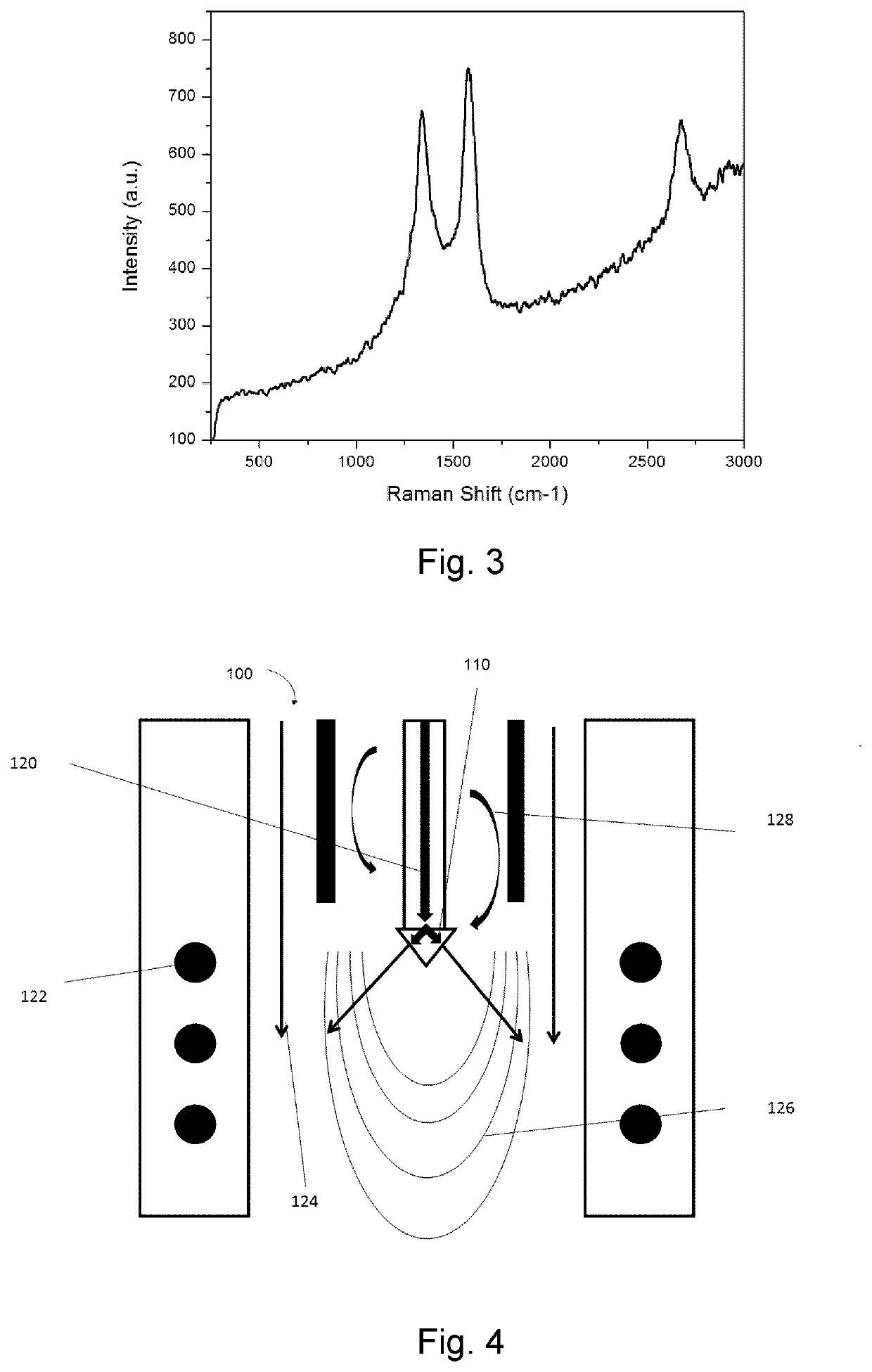Plasma processes for producing graphene nanosheets
a graphene nanosheet and plasma technology, applied in the field of graphene production, can solve the problems of low carbon feed rate, poor graphitization, and inability to meet the electrical conductivity value, and achieve the effects of low pah content, high quality and safe handling
- Summary
- Abstract
- Description
- Claims
- Application Information
AI Technical Summary
Benefits of technology
Problems solved by technology
Method used
Image
Examples
example 1
[0192]In one exemplary embodiment, the hydrocarbon precursor material is methane and it is injected into an inductively-coupled plasma torch (ICP) with a maximal plate power of 60 kW. FIG. 4 illustrates the ICP torch 100 as well as the qualitative flow of the gases including the non-carbon containing gases and the carbon containing substance.
[0193]For a power generator delivering 56 kW to an inductively coupled plasma torch (PN-50 model, Tekna, Sherbrooke, Québec, Canada), and as shown in FIG. 4, 20 slpm argon was used as central swirl gas 128, surrounded by a layer of quench gas (sheath gas) 124 consisting of 174 slpm of argon and 30 slpm of hydrogen gas. 33.6 slpm of natural gas (carbon feed gas) 120 was injected through the injector probe with the designed nozzle 110. Coils 122 conducting the radio frequency alternating current generate the plasma. Qualitative isotherm lines 126 are shown inside the plasma torch. The pressure in the reactor was 500 torr. The injection velocity wa...
example 2
Counter Example
[0201]Conversely, using similar parameters to those described above in Example 1, but injecting the methane with an injection velocity below 60 m / s STP using a single-hole nozzle, a significant fraction of carbon nodules and spheroidal carbon particles were produced leading to the typical Raman spectrum of acetylene black (as shown in FIG. 3). FIG. 5 illustrates the ICP torch 200 used in this counter example as well as the qualitative flow of the gases including the non-carbon containing gases and the carbon containing substance.
[0202]In this example, and as shown in FIG. 5, an injection velocity of 28.6 m / s STP was used. The carbon precursor gas feed rate was 34.7 slpm CH4, and the achieved production rate was 142 g / h. 20 slpm argon is used as central swirl gas 228, surrounded by a layer of quench gas (sheath gas) 224 consisting of 125 slpm of argon and 8 slpm of hydrogen gas. Otherwise the same method and apparatus were used as in Example 1. The carbon precursor gas...
PUM
| Property | Measurement | Unit |
|---|---|---|
| temperature | aaaaa | aaaaa |
| velocity | aaaaa | aaaaa |
| temperature | aaaaa | aaaaa |
Abstract
Description
Claims
Application Information
 Login to View More
Login to View More - R&D
- Intellectual Property
- Life Sciences
- Materials
- Tech Scout
- Unparalleled Data Quality
- Higher Quality Content
- 60% Fewer Hallucinations
Browse by: Latest US Patents, China's latest patents, Technical Efficacy Thesaurus, Application Domain, Technology Topic, Popular Technical Reports.
© 2025 PatSnap. All rights reserved.Legal|Privacy policy|Modern Slavery Act Transparency Statement|Sitemap|About US| Contact US: help@patsnap.com



